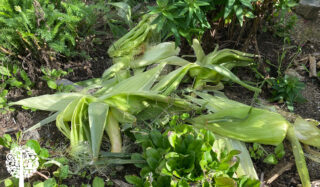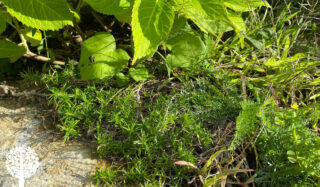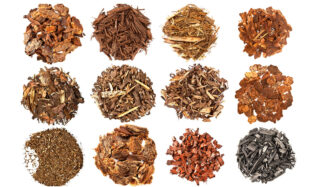Mulching is one of the best things you can do for your garden! An essential component of regenerative-organic and permaculture practices, mulch prevents erosion and helps maintain soil temperature and moisture levels. It also releases nutrients into the ground as it decomposes and prevents weeds from taking over the garden bed. You don’t have to spend much money on mulch; you can find plenty of natural materials near home!
When To Mulch
A good rule of thumb in today’s climate-wise garden is if you see some bare soil, cover it ASAP.
Most gardeners typically apply mulch to the garden every spring to keep the garden cool and moist throughout the heat of the summer. But I also recommend putting some down in the fall, especially if you live in a colder climate.
Mulching the garden in the fall will help insulate plant roots and precious soil life from the cold.
As the mulch breaks down under the snow, it’ll enrich the soil and give your plants the extra boost they need in the spring.

How To Mulch
Mulching is an easy garden chore that will save you work down the line. Less weeding, watering, and worrying about your plant babies!
Spread a two to three-inch layer of your selected material throughout the garden. Do not push the mulch right up around the stems or trunks! It’s best to keep a mulch-free zone of about three inches around the base of the plant.
If you’re mulching bare soil in the summer, water first and then mulch over top. Watering first is unnecessary in the fall or spring, as these are typically wet seasons.

Finally, Mulch Materials
Consider a forest floor; all those natural materials help the trees grow, and they’ll do the same for the garden. Many garden centers sell dyed wood chips, but these won’t do in an organic garden.
. Excellent eco-friendly mulch materials include:
- Wood chips
- Compost
- Low growing groundcovers
- Pine needles
- Leaf mold
- Grass clippings
- Cardboard and newspaper
- Seaweed
- Straw
- Corn husks and silks
- Rocks (although these won’t offer the soil any nutrients!)
We recently received truckloads of shredded natural tree bark after a terrible storm ripped through our area. If this ever happens in your neighborhood (and I hope it doesn’t!), check with local officials to see if they’ll collect fallen trees and mulch them for the community to use at home.

Mulching is easy, budget-friendly, and great for plants and the environment. It’s one of the cornerstones of permaculture and regenerative agriculture and something no garden should go without!
Happy mulching!